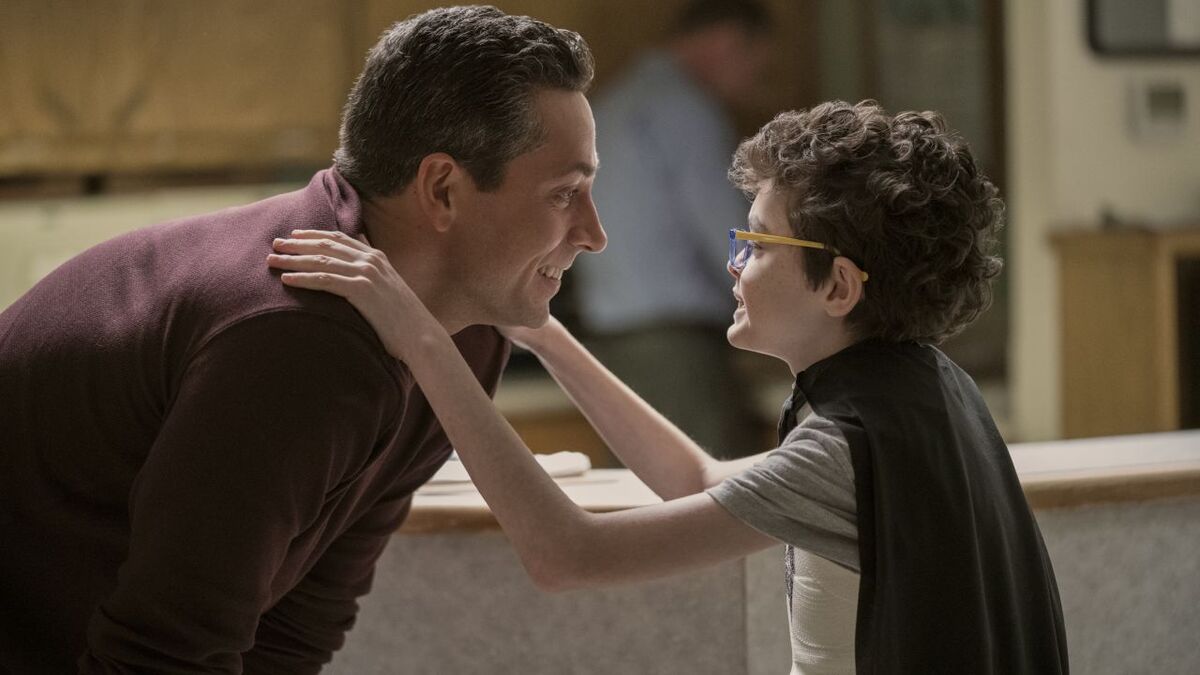
The manner in which Soderbergh directs the sequence, and the rest of the pilot, is what makes The Knick’s period aesthetic more than just an affectation. Takes are longer than is average for the genre or medium, and the camera nestles itself in places where TV cameras rarely go. Wide shots dominate so we can lose the character we’re following in a crowded room or street, and tracking shots through the halls of The Knickerbocker leave you with a comfortable sense of its geography before the hour is up. Only in transition scenes does any sort of a score kick in, but even it is designed to go against the grain. Cliff Martinez’s addictive, pulsating soundtrack uses the same droning electronics and surging synthesizers that made Drive feel like an ‘80s throwback. Here, the music is meant as a pitch forward, an intoxicating anachronism to compliment the cool of Soderbergh’s distant eye.
In this mix of past and future, the modern meat at the heart of The Knick is its writing. Like many a cable drama, the story is kicked off by a shocking death that places the self-destructive genius that is Thackery out of his element. Seemingly aware of just how crowded TV is with guys like him, series writers Jack Amiel and Michael Begler make early efforts to critique Thackery’s melancholy bravado. A poetic funeral speech Thackery delivers has all the romantic darkness of Rust Cohle’s finest rants, but Amiel and Begler know to make note of how much more the eulogy says about Thackery than the departed. Owen, a capable leading man, is in fine form here. Thackery’s one-man crusade against mortality leaves him frequently puffed up, but Owen’s best work occurs anytime the air lets out, revealing the damaged wretch beneath the smock and ‘stache.
The pilot introduces a number of social themes of the era that can only get lip service in an hour spent setting up the characters and methodology of The Knick. Algernon Edwards (André Holland) faces the roadblocks one would expect a turn-of-the-century hospital’s first black surgeon to have, whether from Thackery or the other doctors. Though introduced as an incredibly skilled doctor, the pilot takes an interesting turn by having Edwards gut out the discrimination through self-interest, and maybe just a hint of spite. The Knick’s staff may not want Edwards, but that won’t stop him from advancing his own career off of the risks Thackery takes in trying new procedures and treatments.
The female characters within the hospital walls run the typical gamut of archetypes, such as a freshman nurse present to be wooed by a resident doctor (and berating by Thackery), and Juliet Rylance as the powerful and progressive daughter of the hospital’s main benefactor. Again, it’s Soderbergh who’s usually responsible for livening up the expected beats; Cara Seymour plays a nun at the maternity ward that verbally spars with the hospital’s loutish ambulance drivers, a more opportunistic profession of the time than the modern day equivalent lets on. The repartee of their exchanges reads, “you go girl!”, as Sister Harriett always gets in the last zinger, but the tone of the scene can change mightily when the camera dwells for a few moments after the last punchline, instead of cutting away immediately for a laugh line.
On paper, The Knick’s premiere plays comfortably by the rules of the Rogue Doctor Playing By His Own Rules genre, regardless of which century it’s set in. But it looks the part of something more, and through one hour, that makes for some very satisfying TV. Soderbergh, as always, isn’t reinventing this newest playground he finds himself in, but he is making it his own. As with medicine, TV rarely advances by leaps and bounds, but with every body and body of work, there’s always that chance extraordinary things will occur when someone decides to deviate from accepted practices. Come for the first-rate direction and score, stay for the hope that The Knick‘s function will soon match the vibrance of its form.










Published: Aug 8, 2014 10:50 am